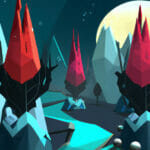Welcome to this exciting tutorial series where we will explore the world of Roblox simulator scripting. In this progressive, 6-part guide, we will debunk the complexities of scripting by taking examples from simple engaging game mechanics.
Table of contents
Understanding Roblox Simulator Scripting
Roblox simulator scripting is vital for creating and enhancing interactive games on the Roblox platform. These scripts facilitate game mechanics and functionality, thereby breathing life into your virtual world.
Why Learn Roblox Simulator Scripting?
As the virtual gaming industry evolves, mastering Roblox scripting allows you to build versatile, dynamic, and enjoyable games. Moreover, Roblox provides an enriching platform for aspiring game developers to practice, learn, and showcase their creativity.
Relevance in Today’s Gaming World
The value of Roblox scripting is undeniable as it provides a springboard for both neophytes and experienced developers to explore varied aspects of game development. The versatility of scripting languages like Lua, used in Roblox, helps in creating immersive and responsive gaming experiences.
Are you excited to get hands-on with Roblox simulator scripting? Stay tuned for the next parts of our tutorial where we will dive deeper into the code, enhance your understanding, and help you take your first steps towards becoming proficient in Roblox scripting.
Getting Started With Roblox Studio
Before diving into the code, let’s understand the basic setup for Roblox studio. It is the development environment where we script our simulator games.
-- Open Roblox Studio. -- Log into your Roblox account (Sign up if you don’t have one). -- Click the “Baseplate” under the “New” tab. -- Save the project in the desired location on your computer.
Creating a Part and Writing a Simple Script
Roblox simulators revolve around Parts and Scripts. Let’s create a Part in the workspace and draft a simple script to change its color.
-- Right-click in the Workspace Roblox studio and select Part. -- After creating the Part, select it and click on 'Script' under the PrimaryPart section. -- The scripting workspace will open. You can write your code here. -- This simple script will cause the part's BrickColor to change every second. script.Parent.BrickColor = BrickColor.random() wait(1)
Working with GUIs (Graphical User Interfaces)
GUIs are crucial for enhancing player interaction in your Roblox simulator game. We will create a simple button on the screen that, when clicked, displays a custom message.
-- First, click on 'StarterGui' under 'Workspace' and choose 'ScreenGui'
-- Then, click on 'ScreenGui' and choose 'TextButton'
-- Customize the button as required (Size, Position, Text, etc.)
-- Under 'TextButton', click on 'Script' and draft the script to display a message.
script.Parent.MouseButton1Click:Connect(function()
print("Button clicked. Action performed!")
end)Working with Events
Interaction in Roblox games is handled through Events. Let’s create a simple interaction where clicking a Part toggles its transparency.
-- First, select the Part in the workspace and add a ClickDetector under it. -- Title the script 'ToggleTransparency' script.Parent.ClickDetector.MouseClick:Connect(function() if script.Parent.Transparency == 0 then script.Parent.Transparency = 0.5 else script.Parent.Transparency = 0 end end)
These basic examples lay the foundation for your Roblox scripting journey. We encourage you to play around with the properties and experiment. In the upcoming parts, we’ll delve deeper into the code complexities.
Diving Deeper into Roblox Scripting
Now that we’ve covered the basics, let’s delve into more complex aspects, such as creating NPCs (Non-Player Characters), using loops, and handling data.
Creating an NPC
NPCs contribute significantly to a game’s depth and immerse the player in the game’s world. Here’s how to animate an NPC in your game.
-- Assume we already have an NPC named "Bob"
-- We’ll make Bob move from one position to another to simulate walking.
local Bob = game.Workspace:FindFirstChild("Bob")
local destination = Vector3.new(100, 0, 100)
Bob.Humanoid:MoveTo(destination)Replicating Elements with Loops
Loops are fundamental in reducing repetitive coding tasks. Here’s an example of how you can create multiple parts using a loop.
-- Let's create 10 Parts in the Workspace
for i=1, 10 do
local part = Instance.new("Part")
part.Anchored = true
part.Position = Vector3.new(i * 5, 5, 0)
part.Parent = game.Workspace
endWorking with User Input
User interaction greatly enhances gameplay. Here’s an example showing how you can handle player gesture, specifically when a key is pressed.
-- Here, we print a message when the player presses the "B" key
game:GetService("UserInputService").InputBegan:Connect(function(input)
if input.KeyCode == Enum.KeyCode.B then
print("B key is pressed!")
end
end)Handling Data Store
Roblox DataStore is a powerful service allowing you to save data that persists across game sessions. Here’s an example to show how to save a player’s points.
local DataStoreService = game:GetService('DataStoreService')
local myDataStore = DataStoreService:GetDataStore('MyDataStore')
-- To save a player's points:
local points = 1000
local success, err = pcall(function()
myDataStore:SetAsync(tostring(player.UserId), points)
end)
if success then
print("Points saved successfully.")
else
print("Failed to save points with error: ", err)
endThese more advanced examples enhance your understanding of Roblox scripting’s potential. Feel free to experiment with different properties and actions and stay tuned as we delve even deeper into Roblox Scripting in our subsequent tutorials.
Efficient Manipulation with Tables
Tables in Roblox scripting are equivalent to arrays in other languages, allowing you to manipulate data in an efficient and organized way. Here’s an example of how to create a table of characters and print their names.
local characters = {"Alice", "Bob", "Charlie"}
for i, name in ipairs(characters) do
print("Character " .. i .. " is " .. name)
endBuilding and Scripting UI Elements
Graphical User Interfaces (GUIs) in Roblox significantly enhance player interaction and visual aesthetics. Here’s how to build and script a progress bar that fills up when a button is clicked.
-- Assume we have a Frame (ProgressBar) and a Button in the UI -- We'll increase the ProgressBar's size each time the Button is clicked local button = script.Parent.Button local progressBar = script.Parent.ProgressBar button.MouseButton1Click:Connect(function() if progressBar.Size.X.Scale < 1 then progressBar.Size = UDim2.new(progressBar.Size.X.Scale + 0.1, 0, 0, 30) end end)
Once you grasp the concept, try creating more interactive UI elements like health bars, timers, or inventory systems.
Exploring Pathfinding
Pathfinding is a powerful feature allowing entities to navigate through the game world. Here’s an example of how you can make an NPC find and move to the nearest player.
local pathfindingService = game:GetService("PathfindingService")
-- Assume we have a Humanoid NPC named Bob
local Bob = game.Workspace:FindFirstChild("Bob")
game.Players.PlayerAdded:Connect(function(player)
player.CharacterAdded:Connect(function(character)
local path = pathfindingService:CreatePath()
path:ComputeAsync(Bob.HumanoidRootPart.Position, character.HumanoidRootPart.Position)
local waypoints = path:GetWaypoints()
for _, waypoint in ipairs(waypoints) do
Bob.Humanoid:MoveTo(waypoint.Position)
Bob.Humanoid.MoveToFinished:Wait()
end
end)
end)Implementing Timers and Delays
Timers and delays are important in managing sequence and timing in your game. Here is an example of how to use the wait() function to animate a light sequence.
-- Assume we have three lights: RedLight, YellowLight, and GreenLight -- We'll cycle through the lights with a pause at each light while true do game.<a class="wpil_keyword_link" href="https://gamedevacademy.org/best-unity-lighting-tutorials/" target="_blank" rel="noopener" title="Lighting" data-wpil-keyword-link="linked">Lighting</a>.RedLight.Enabled = true wait(5) game.Lighting.RedLight.Enabled = false game.Lighting.YellowLight.Enabled = true wait(2) game.Lighting.YellowLight.Enabled = false game.Lighting.GreenLight.Enabled = true wait(5) game.Lighting.GreenLight.Enabled = false end
Roblox scripting offers limitless opportunities for game innovation and interactivity. Exploring and mastering various mechanics guides you towards building engaging, impactful, and increasingly immersive experiences.
Continuing Your Roblox Scripting Journey
Mastering the fundamentals of Roblox scripting opens the door to more advanced game development concepts, and the potential for creation is immense. However, just like any other skill, continuous learning and practice are key to becoming proficient.
At Zenva, we have crafted a collection of high-quality courses that cater to learners of various experience levels, allowing you to go from beginner to professional. Specifically, the Roblox Game Development Mini-Degree is a comprehensive compilation of courses centered around creating diverse genres of games using Roblox Studio and Lua. Whether you’re interested in obstacle courses, melee combat games, or FPS games, this Mini-Degree can train you in essential skills such as multiplayer functionality and building leaderboards. Complete the courses and you’ll have added remarkable projects to your portfolio, and gained skills vital for a thriving career in game development.
Feel free to navigate through our broad collection of offerings and discover more engaging courses. Continue your learning journey with Zenva and unlock your potential in the world of game development! Visit our dedicated Roblox page to explore more.
Conclusion
Embarking on your journey with Roblox scripting not only equips you with a powerful tool to create amazing games but also opens up a world of creative potential. With each step you take on your scripting learning path, you unmask a new layer of exciting game mechanics and design approaches.
At Zenva, we are thrilled to accompany learners like you on this exciting endeavor. Let’s continue the journey together as you further explore the depths of Roblox scripting and game development. Get started now with our extensive Roblox course collection and let the era of amazing game creation unfold!
Did you come across any errors in this tutorial? Please let us know by completing this form and we’ll look into it!

FINAL DAYS: Unlock coding courses in Unity, Godot, Unreal, Python and more.







